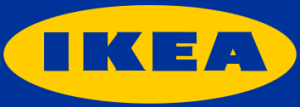Lessons from IKEA

The IKEA logo and IKEA wordmark are registered trademarks of Inter IKEA Systems B.V.
It was after a gap of many years that, this past weekend, I visited the IKEA store not too far from my home with my wife and daughter. And, I was once again dumbfounded by the sheer magic that is IKEA. The excitement in me was palpable even as we pulled into the parking lot. And, for a brief moment, as we entered the cavernous store I just froze to take in the environment. Much to the delight (or embarrassment) of my daughter who thought I behaved like a 3-year old making his first visit to Disneyland!!!
I am not alone in displaying this behaviour. Over the years IKEA has become the quintessential global cult brand. Its legion of fans almost border on the fanatic. Over the years IKEA has evolved a state of mind that has revolved around giving the aspirational middle class contemporary and elegant design without having to break their banks. This, and the wacky promotions they come out with, has generated an enthusiasm that few institutions, in or out of business, can muster.
There is something unique about an IKEA store visit, whichever part of the world you are in. With an average size of over 300,000 sq. ft., these branded blue and yellow buildings are equal to the size of five football fields. And, because the store is designed as a circle, as long as you walk in one direction you are bound to get inspired by the mock-ups of different rooms of your home. Wide aisles allow you to inspect merchandise without holding traffic while the sheer number of options in design makes you fall in love with the store and spend more – time and money.
As a lifelong student of management practices, companies like IKEA have always given me food for thought. And, with the directional shift I have taken in life, I looked for business lessons from IKEA that could be replicated at small and medium businesses. To be fair, IKEA has its own share of detractors. Not so long ago Johan Stenebo, a senior executive, quit the organization and wrote a book “The Truth About IKEA”. But not many of the charges against it have managed to stick forcing a leading US news-magazine to call the company The Teflon Giant.

IKEA Founder Ingvar Kamprad. Image downloaded from website ikea.com, Copyright does not belong to us
Perhaps the key driver of the IKEA story is its relentless pursuit of its vision of “offering a wide range of well-designed and functional home furnishing products, at prices so low that as many people as possible can afford them”. This manifests across the organization in many ways. From the spartan lifestyle of its founder, Ingvar Kamprad, to the egalitarian culture at its offices and the lean manner in which it runs its stores. It ruthlessly pursues efficiency and constantly looks to doing tasks in a manner that reduces waste, optimizes production and thus brings the overall cost down.
The company prides itself in having a listening ear. Every employee in the chain is trained to listen to customers. Apart from getting feedback from the millions who visit the stores, the company makes it a practice to go out and talk to people, understand their dreams and look at the challenges they face in their day-to-day lives. This constant listening to people brings a ton of ideas to the forefront and provides the company with enough ammunition to innovate.
That brings us to the next key driver – innovation. A facet that IKEA has excelled at over the years. Much like its products that are flat-packed, IKEA is a fairly flat organization. Everyone in the chain is expected to contribute to the idea pool. And innovation is not just in product development. The IKEA way of innovation straddles all functions and innovations range from specific products, to food in the cafeteria, to services introduced and marketing campaigns. Another important part of their innovation process is the creation of communities or the IKEA-hackers as the company calls them. These are fans of the company who constant try to modify and improve the company’s products.

The Grundtal Series of Kitchen ware (Image downloaded from website ikea.ca)
Product names in the IKEA inventory have taken on a life of their own. With seemingly unpronounceable names these have captivated consumers for decades now. With names like Fyrkantig (for square candles), Riktig Ogla (for curtain rings) and Grundtal (for ktichen products) the product names have a mystic aura around them. The product naming system was largely driven by the fact that the founder, Kamprad, was dyslexic and could not manage the inventory with numeric codes. While it is easy to assume that product names are Swedish, this is not the case. IKEA has evolved a product naming system where each type of item carries a different name origin.
Its ability to envelop the customer is something you cannot miss when you walk into an IKEA store. From the sweet smell of cinnamon buns wafting through the parking lot, to free daycare that is extremely well managed to relieve parents the stress of managing their kids while shopping and a great food court that has fast food with restaurant-like service and atmosphere, the stores have it all. In one fell-swoop they manage to keep the customer free of any worries so that their dollar spend is significant.

Image copyright by Stuart Miles. Downloaded from freedigitalphotos.net
In conclusion, you will agree there are several lessons from IKEA that we can learn. I am sure these are replicable by you as a small and medium business owner? A relentless pursuit of vision and efficiency. The listening ear. A fanatical liking for innovation. Building communities that work in your favour. Creating an aura around your brand. Enveloping the customer…..each and every facet is something that you can execute to your benefit.
So, what are you waiting for?

